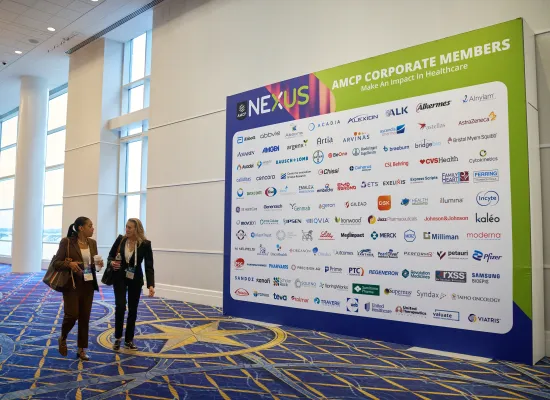
AMCP Is Leading Efforts to Find New Benefit and Payment Models to Address High-Cost Medications
(AMCP Partnership Forum on Designing Benefits and Payment Models for High-Investment Therapies)
By now, it’s virtually an article of faith that the costs of pharmaceuticals are too high (and, by-the-way, so are costs of hospitalizations, MRIs, ambulance rides and many other health care interventions). But because so many people rely on and purchase medications every day, they feel the bite of pharmaceutical costs more acutely. Last year headlines from a bad actor who raised the price of a lifesaving drug by more than 5,000 percent have added to the impression that costs are out of control.
We agree that high costs represent a challenge that must be addressed. This issue, in fact, lies at the heart of AMCP’s vision: to improve health care for all. We can’t achieve this vision if patients can’t afford their medications.
That’s why we applauded the White House this spring for releasing its blueprint to lower drug costs. We agree with many of the ideas put forward, such as fostering a competitive generic and biosimilars marketplace, and offering greater flexibility in designing Medicare Part D benefits. You can read AMCP’s recently submitted comments on the blueprint.
But AMCP is not simply adding our voice to the chorus. We are taking a proactive lead in developing new models and paradigms that aim to make pharmaceuticals more affordable for all Americans.
Most recently, AMCP held a multi-stakeholder Partnership Forum on Designing Benefits and Payment Models for Innovative, High-Investment Medications. The two-day event last month gathered ideas and best practices from experts representing health plans, integrated delivery systems, pharmacy benefit managers, employers, patient organizations, national professional associations, the federal government and biopharmaceutical companies.
Participants discussed new strategies to manage the “total cost of patient care” across the medical and pharmacy benefits. And they considered how best to implement promising new value-based agreements, in which payments are determined based on the “value” a product provides, rather than simply its unit price.
The overwhelming consensus: new payment model are needed to address the coming wave of innovative, high-investment therapies.
Participants also observed that a “one-size-fits-all” approach won’t meet the needs of all stakeholders and all emerging therapies. Selecting the appropriate payment model will be driven by factors such as the number of patients affected and payer size, as well as whether a treatment is curative or must be taken for a long duration to manage a chronic disease. Testing new models also will require safe harbors to existing laws and regulations. Current hurdles include the Medicaid best price requirements and other federal and state mandated coverage requirements that constrain value-based contracting and other innovative ideas.
So challenges remain. But we’re making progress. This Partnership Forum is one of many that AMCP has held to address affordability issues. And rest assured it won’t be the last.
AMCP is committed to working with our network of more than 8,000 managed care pharmacy professionals to address the rising cost of pharmaceuticals in a manner that is attainable, practical and sustainable. And we are committed to bringing together stakeholders from across the health care spectrum to find solutions that will benefit all Americans.
The time now is for action. And I’m proud to say, AMCP is helping lead the charge.
Featured News & Resources
See Full CalendarAI Pre-Conference Program
AMCP Southwest Day of Education
Upcoming Events
AMCP offers a wide variety of educational opportunities, from events and webinars to online training.







